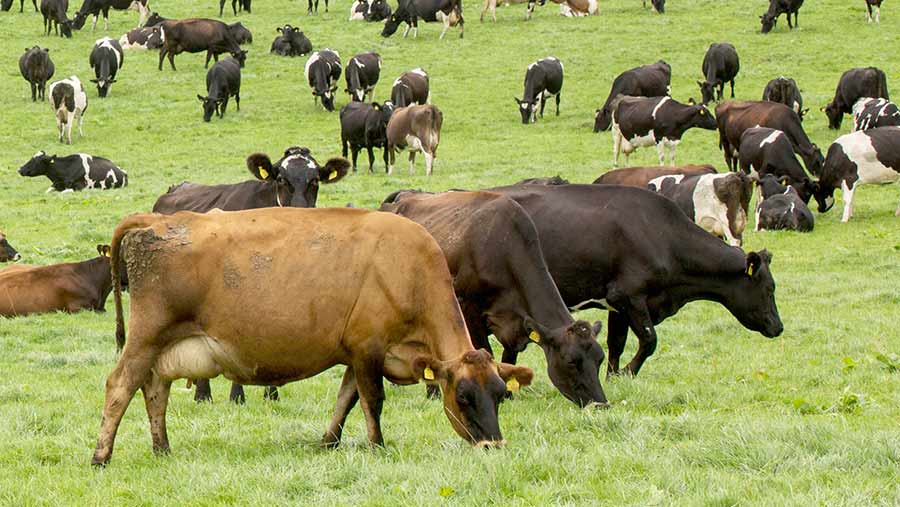How to budget for the switch to autumn calving
 © Tim Scrivener
© Tim Scrivener Transition management has several different meanings when it comes to dairy cows and their management. With cow nutrition, transition often refers to preparing for calving and the next lactation.
However, in our dairy industry the word transition can mean the change from one system of dairy farming to another as producers work to establish a more robust and rewarding basis with more consistency from year to year.
This need is becoming more important as we work towards Brexit, with inflation pushing up costs and exchange rates making imports such as protein more expensive.
See also: Autumn or spring block calving – which is best?
The potential loss or reduction of subsidies threatens to reduce income by up to 2p/litre and higher exchange rates are making imports cost at least 10% more.
Recent analysis carried out by AHDB Dairy indicates that almost 80% of the UK’s milk production occurs from all-year-round (AYR) calving businesses.
By deduction, 20% of supply will be from autumn and spring calving herds, although the definition of autumn often refers to those calving in July.
Fluctuating prices
The highest cost of production in the UK is normally derived from AYR calving herds and the fluctuating milk prices very quickly move their businesses from profit to loss and then profit again.
Increasingly, the feedback from the dairy industry – which does not have aligned milk price support – is that an increasing number of AYR calvers are moving towards autumn calving.
The big challenge for many dairy businesses that may want to make such a change is how to positively manage the cashflow transition from deferred and later calvings.
A 200-cow herd moving from AYR to autumn calving could mean up to 400,000 litres are lost in the transition year.
At 26p/litre this would reduce income by £109,000 plus, and could increase the working capital demand before cost savings can come in to benefit the business.
Long-term benefit
It should be remembered that such a transition in the production profile is a one-off and will be of benefit for the next 20 years or so.
A long-term loan for such working capital could be secured at a favourable fixed interest rate at 5% or less and spread over 1.4m litres per year.
With a potential annual improvement of 2-4p/litre by being a seasonal calver, the short-term cashflow needs (even before any cost savings are accounted for) can best be transitioned by spreading the repayment over the period of benefit (target at 10 years) and still result in improved profits.
|
Interest rate (%) |
Annual cost (Interest + capital) |
Per litre (p) |
|
|
10-year loan |
5 |
£14,170 |
1.01 |
|
20-year loan |
5 |
£8,720 |
0.6 |
